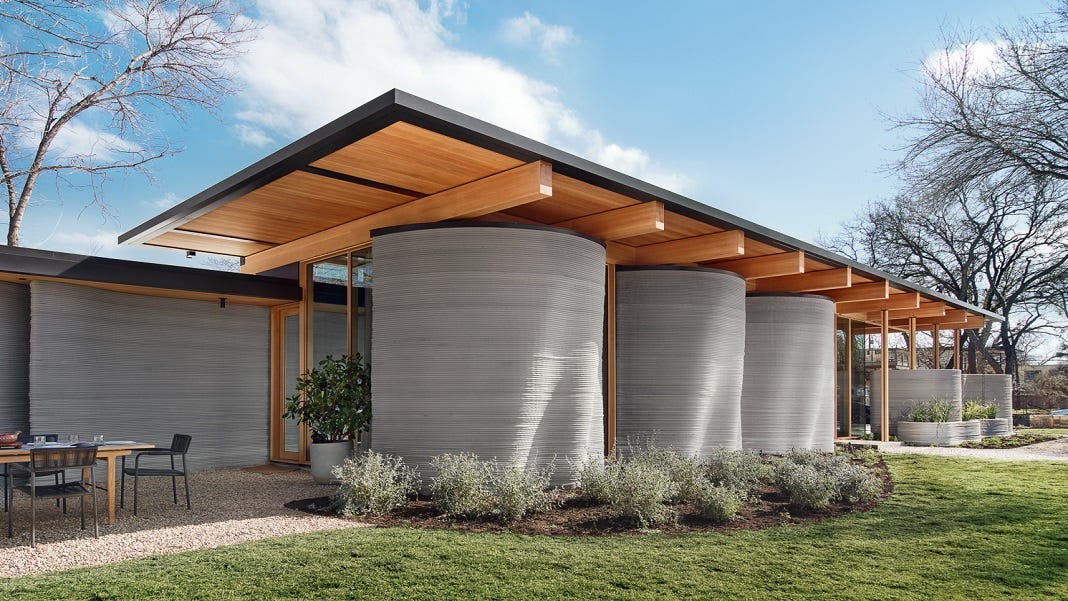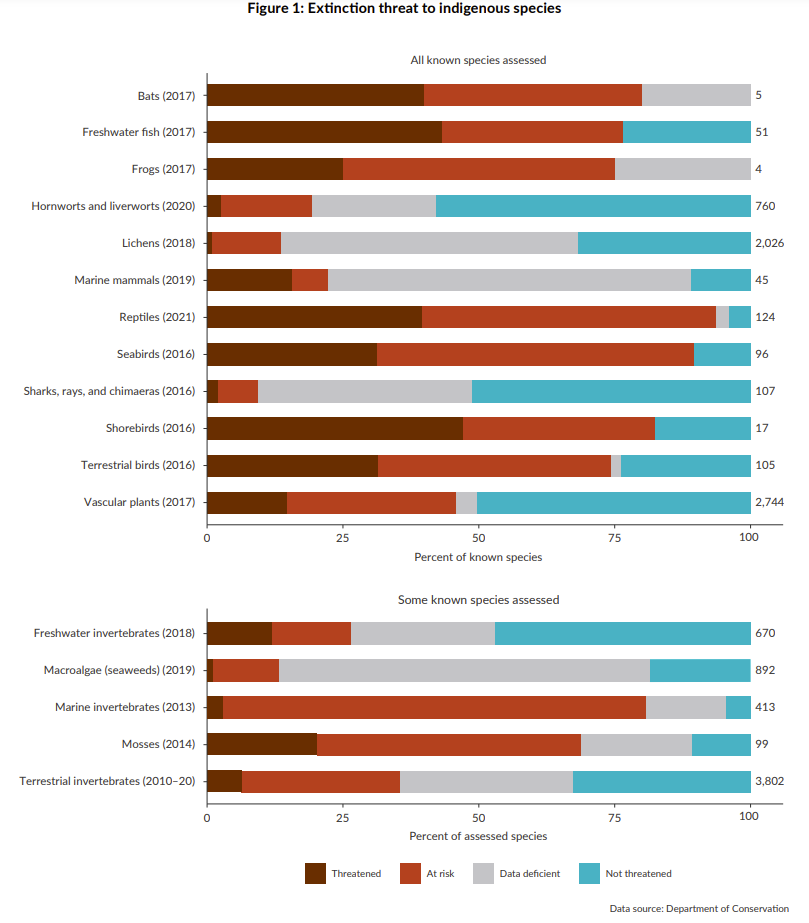Memia on Sunday 24-Apr-2022: Agricultural automation and food sovereignty🚜// state of the environment🍂// Russo-Ukraine strategic calculations 🇺🇦// Tesla of housing?🏘️// valley of liquidity💧
I would feel disappointed and frustrated
Kia ora,
Hope you’re enjoying your Sunday morning!
Welcome to this weekend’s Memia on Sunday - and a big welcome to all the new readers who have joined this week, lots of new signups following Wednesday’s piece on the obsolete UI of today’s politics. Struck a chord, perhaps.
(Reminder students get a paid subscription for free if you want one… just drop me an email with your uni/school/other email and I’ll sort it). And tell your mates:
This issue: the usual set of weekend exploring links and then, below the paywall, going a bit deeper on open source agricultural robotics - and raising the issue of future food sovereignty as production becomes ever-more automated.
(Sorry for slightly later than usual publishing today - I had some issues with the Substack editor and lost an earlier draft😣…. plus this morning I had to get up at the crack of dawn as support crew for my daughter’s school team in the 12-hour(!!) Kaikoura Adventure Race - see video below the start for the 7am sea swim section! Awesome event.)
Weekend exploring
Links to onward reading, listening and watching…
🇺🇦 Russo-Ukraine war…strategic calculations
I’m still working on my synthesis of the 120 geopolitical “Axes of Uncertainty” from a couple of weeks ago into some tangible scenario models. More soon…
Even in the 2 weeks since then, it’s become clear that NATO strategy is to contain the Russo-Ukraine conflict within Ukraine’s borders, fought only with conventional weapons. But within this constraint framework, arms of all kinds are now pouring into Ukraine from all around NATO.
(The darker side of this equation: shareholders of Western arms manufacturers will be looking forward to bumper profits this year. War has always been good for some businesses…)
Against this combined economic and military force, who knows what Russia’s evolving strategy actually is. Faced with the prospect of conventional military defeat or just a long drawn out campaign of attrition, the risks of escalation beyond conventional warfare, or beyond Ukraine’s borders, are more heightened than they have ever been.
A few pieces I read this week provide more insights on the strategic calculations in play:
Reuters “Factbox”: What is the chain of command for a potential Russian nuclear strike?
Political commentator David Rothkopf in the Daily Beast canvases a range of sources to assess the landscape, concluding: even if Russia uses a nuke, the US probably won’t—but Putin would still pay dearly:
“To use a nuclear weapon breaks the ultimate taboo. There is no moral distinction to be made between a ‘tactical nuke’ and a strategic one. It would be a complete game-changer for the world. We should signal publicly and privately starting now that it would mean complete and total isolation. All embassies shut. All visas canceled. All Russian properties confiscated.”
— Former Estonian President Toomas Hendrik-Ilves
US academic Jeffrey Sachs is outspoken about the long term sustainability of US-led sanctions if the war drags on: A negotiated peace is the only way to end Russia's war on Ukraine.
All this as the war appears to have reached deeper into Russian territory in the last few days:
Reports of several major fires at critical strategic Russian chemical infrastructure plants - which could potentially cripple Russian weapons manufacturing supply chains.
Tense times.
🏘️Tesla of housing?
On to more optimistic matters…
Jason Ballard, CEO of construction startup ICON believes that 3D printed houses will fundamentally change the construction industry, solving the supply chain and labour shortages which dog the housebuilding sector worldwide. He wants ICON to become the “Tesla of housing”:
“Not just the best 3D printed homes on the market, but the best homes on the market. What if we could build houses that were twice as good, in half the time and at half the price? …We want 3D printed homes to be the best homes…we can solve the global housing crisis in our lifetime.”
The demand is certainly there.
(A couple of months ago in Memia 2022.08 I featured Tāmaki Makaurau-based Qorox who are pioneering a similar construction approach in Aotearoa).
📊Data visualisations
Three data visualisations which caught my eye this week:
Shipping lanes of the world:

💧Valley of Liquidity:
Fintech engineer Kris Machowski used WebGL to animate usually-2D order books into a 3D time-series delivering new insights on how market maker strategies may be manipulating the market (click below for thread).
This is one indicator of how I expect 3D immersible VR user interfaces will provide new ways of interacting with giant datasets, enhancing productivity and insights…

Out of Africa
How did humans spread around the globe? (Missing the Taiwan→Aotearoa link…!)

Longer reads
🍂State of the environment
Two important Aotearoa government reports out this week which I haven’t had time to read yet in detail but sharing here:
DOC released the implementation plan for 2020’s Aotearoa New Zealand Biodiversity Strategy – Te Mana o te Taiao. Aimed at driving collective action to tackle New Zealand’s biodiversity crisis… but also largely focused on bringing the legislative framework governing DOC into the 21st century so that DOC actually has some legal teeth going forward.
Related article in Stuff interviewing Conservation minister Kiritapu Allan… who remains upbeat about the opportunities despite the background trends…
The Ministry for Environment also released their annual State of the Environment report for 2022… which is a sobering read judging by the summary:
“The majority of our rare ecosystems are threatened. Habitat destruction, along with the introduction of mammalian predators, has severely reduced the populations of many unique birds, reptiles, and plants. Many remain threatened with extinction or are at risk of becoming threatened…
…Looking to the future (Hiwa-i-te-rangi) identifies many challenges that may impact the wellbeing of current and future generations. These include the impacts of climate change, population growth, risks to food and water security, and threats to ecosystems. The challenges ahead are complex and can play out in many ways, and sometimes beyond our direct control.”
Lifetimes of work ahead just to turn the boat around...
Weekenders
A couple of diversionary mind-ticklers this Sunday:
👀In conversation with GPT-3… intelligent … or not?
An 83-page FBI guide to internet slang from 2016… imagine trying to keep this up to date! (h/t spotting by Saya Wahrlich).
🚜Agricultural automation and food sovereignty
OK, this week’s deeper dive is a look across forthcoming challenges with agricultural automation - and alternative approach of strategic investment in open-source technology. Paid subscribers read on…
Keep reading with a 7-day free trial
Subscribe to Memia to keep reading this post and get 7 days of free access to the full post archives.










